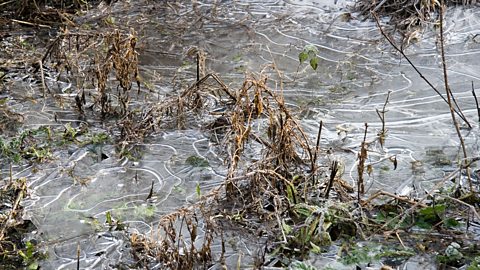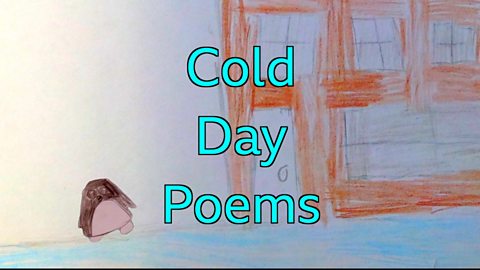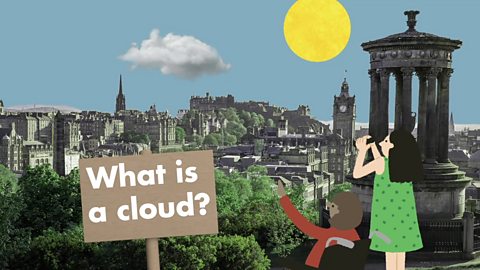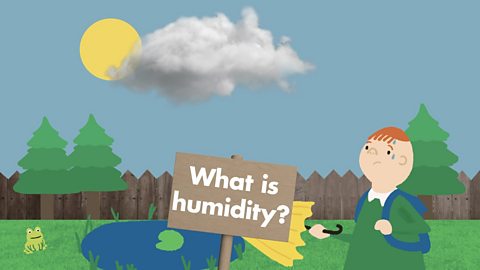What are ice and frost?
When it gets very cold, we often see frozen puddles or frost on the pavements and grass outside.
In this article you can learn:
- The difference between ice and frost
- How ice forms
- How frost forms
- What an ice sheet is
This resource is suitable for weather topics for primary school learners.
Video - What are ice and frost?
Watch this video to learn about the difference between ice and frost and how they form.
Wrap up warm as it looks cold outside! There’s frost on the cars and look - all the puddles have frozen into ice!
How does this happen?
Frost and ice form when the temperature falls below freezing – that’s less than 0 degrees Celsius.
For water to become a solid, like the frozen puddles in your street, it has to reach its freezing point. This is the point at which water cools to 0C,or even colder, and and becomes ice.
As well as low temperatures, ice also needs something to freeze onto. Cold surfaces, tiny bits of dirt, and other ice crystals are all ideal for this.
On very cold days during the winter, you may see icicles hanging from yourroof. These are created by water droplets running down the roof and freezing to the surface when the temperature is 0°C or lower.
Overnight, more droplets flow down and freeze to the already frozen ice crystals, creating icicles. They continue to grow and get longer as more droplets freeze on the end of the icicle.
Frost is what we call the white ice crystals we see on a cold day. It is formed when water vapour lands on a surface, like the pavement or grass, which is already below freezing.
In the UK, we only usually see ice and frost in winter.
In some places, where the temperature is below freezing all the time, ice builds up in huge layers; covering large parts of the land for a long period of time. These are called ice sheets. The two biggest ice sheets on Earth cover most of Greenland and Antarctica - that’s a lot of ice!
How likely is ice to form where you are right now? Maybe you can check the temperature and find out!
How does ice form?
- Liquid water freezes and turns into a solid (ice) when the temperature is around 0°C or lower.
- Ice needs something to freeze on to like: cold surfaces, tiny pieces of dirt or other ice crystals.
How does frost form?
- The air around us contains water vapourWater when it is an invisible gas..
- Water vapour lands on a cold surface, like the pavement of grass, which is already at freezing point (0°C) or lower.
- The air is so cold that the water vapour condenses into liquid water droplets.
- The water droplets freeze and turn into tiny ice crystals, which we call frost.
Examples of ice and frost
Compare ice and frost in the UK to the ice sheets in Greenland and Antarctica.

Image caption, Frozen puddle
When liquid water, like a puddle, reaches its freezing point (0°C or lower) it turns into ice. In this picture, the ripples in the water have frozen too.
Image caption, Icicles
Icicles form when water droplets freeze as they flow downwards. More water droplets drip down and freeze on to the icicle. So the icicle gets bigger and longer.
Image caption, Frost
Frost is what we call the tiny white ice crystals on surfaces outside, like leaves or the grass. Water vapour lands on a cold surface which is already below freezing (0°C or lower).
Image caption, The Greenland ice sheet
An ice sheet is a large piece of ice that covers the land. The Greenland ice sheet covers about 1.7 million square kilometers of land. That's a lot of ice!
Image caption, The Antarctic ice sheet
The Antarctic ice sheet is the largest piece of ice on Earth. Sadly, a lot of this ice is melting because of global warming. This means some animals are losing their homes and the sea levels are rising.
1 of 5
The Antarctic ice sheet
The Antarctic ice sheet is the largest piece of ice on Earth. Unfortunately, a lot of the ice is melting because of global warming. This means some animals are losing their homes and the sea levels are rising.
Learn more about global warming and sustainability here: 2nd level Sustainability

Key words about ice and frost
- ice - Frozen water.
- frost - Small white ice crystals on the ground or other surfaces when the temperature is below freezing.
- icicle - A hanging piece of ice formed when dripping water freezes. As water droplets flow downwards they freeze on the surface, so the icicle gets bigger and longer.
- freezing point - The point at which water becomes a solid. This is usually at 0° Celsius or lower.
- Celsius - A unit of measurement used for temperature. 0° is the freezing point of water and 100° for the boiling point of water. Celsius is also sometimes called centigrade.
- ice sheets - Huge areas of ice that have built up and cover land over a long period of time. There are ice sheets in Antarctica and Greenland, where it is extremely cold.
Test your knowledge
Quiz
Challenge

Now that you know more about ice and frost, try writing a cold weather poem like these great poems by Ratho Primary pupils.
Cold Weather Poems. videoCold Weather Poems
Ratho Primary pupils wrote these great poems about the cold weather typical of the Scottish winter.

More on Weather
Find out more by working through a topic
- count5 of 24

- count6 of 24

- count7 of 24

- count8 of 24
